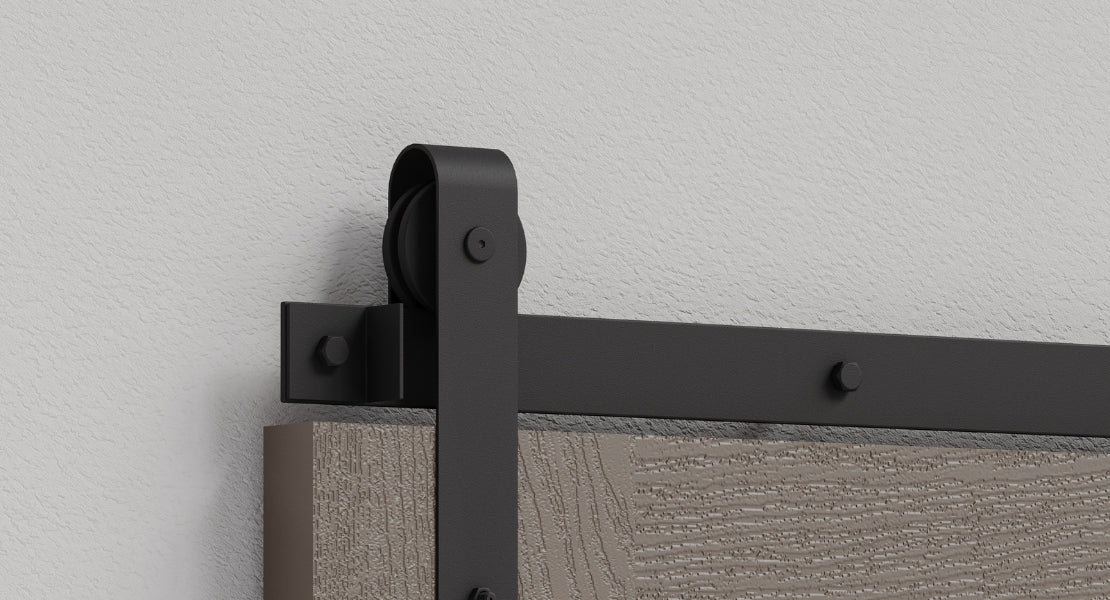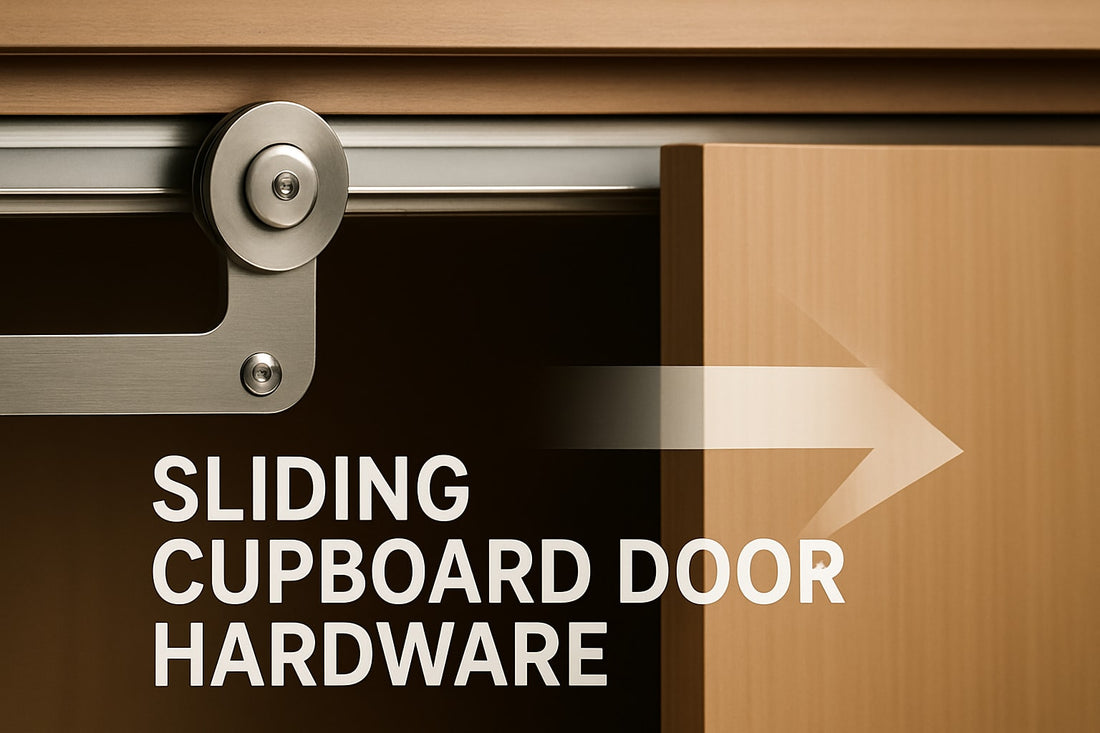
Sliding Cupboard Door Hardware Guide: Expert Tips for 2025
Looking to maximize space and add a modern touch to your home? Sliding cupboard door hardware is quickly becoming a staple in stylish, functional interiors.
This guide is here to help you navigate every aspect of sliding cupboard door hardware, from expert tips and installation steps to the latest trends for 2025. You’ll discover how to choose the right system, install it with confidence, and keep it running smoothly for years.
Ready to transform your cupboards? Let’s dive in and make every inch of your space work smarter and look better.
Understanding Sliding Cupboard Door Hardware: Types and Components
Sliding cupboard door hardware is transforming home organization, offering a sleek, space-saving alternative to traditional swinging doors. Instead of bulky hinges that eat up room, these systems use tracks and rollers to let your cupboard doors glide smoothly. This means you can maximize every inch, especially in tight spots like galley kitchens or small laundry rooms.
The magic of sliding cupboard door hardware lies in its parts. Tracks are mounted either on top, bottom, or both, guiding the doors along a set path. Rollers, attached to the doors, ensure smooth movement. Guides keep everything aligned, while soft-close mechanisms add a gentle, quiet touch. Handles and pulls finish the setup, blending function with style.
You’ll often see single sliding systems on narrow cabinets, perfect when you want to access one side at a time. Double sliding setups shine in bigger pantries, letting both doors move independently for easy reach. Homeowners love the design flexibility—whether you’re working with a compact kitchen or a spacious walk-in pantry, sliding cupboard door hardware adapts to your needs.
Let’s compare: in a tiny kitchen, a single sliding door eliminates the swing radius, giving you more room to move. In a large pantry, double sliding doors can create a dramatic, modern look and effortless access.
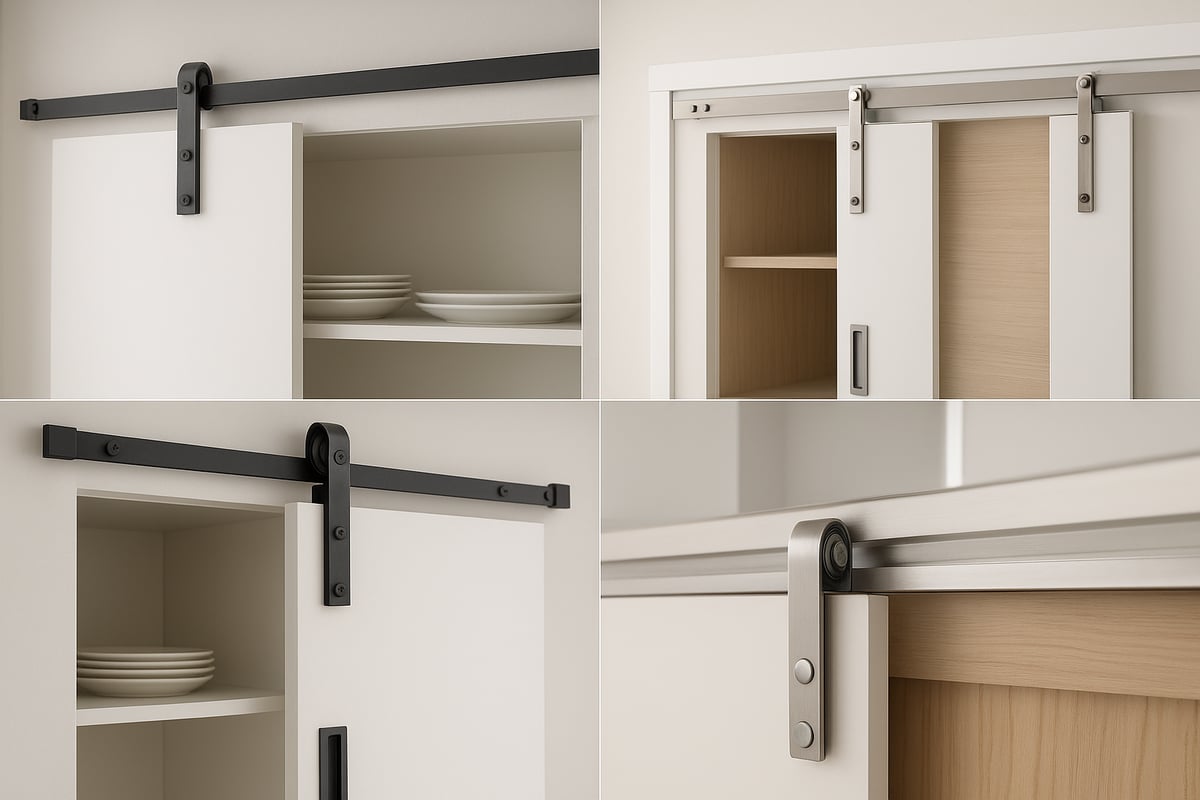
Overview of Sliding Cupboard Door Hardware Systems
When you look beneath the surface, sliding cupboard door hardware is all about efficiency. Unlike classic hinged doors, these systems utilize a combination of tracks, rollers, and guides to enable doors to glide horizontally. The main components include:
- Tracks: Guide the movement, mounted above or below.
- Rollers: Attached to the door, they ensure a smooth glide.
- Guides: Keep the door steady and prevent wobbling.
- Handles and pulls: Offer grip and tie in with your kitchen’s style.
- Soft-close mechanisms: Quietly slow the door as it closes, preventing slamming.
You can choose between single and double sliding systems. Single systems are great for smaller cupboards and tight layouts. Double sliding setups are ideal for larger storage spaces, letting you open either side with minimal effort.
One of the biggest perks is space-saving. Sliding cupboard door hardware eliminates the need for clearance to swing doors open, so you get more usable space. Plus, you can pick from a range of design options to match your home’s personality.
In compact kitchens, a single sliding system makes the most of limited space. For large pantries, double doors on sliding tracks provide easy access and a modern, seamless look.
Types of Sliding Door Hardware for Cupboards
Choosing the right sliding cupboard door hardware means understanding mounting styles and mechanisms. Top-mount systems suspend the door from a track above, offering a clean, floating look. They’re popular for their smooth operation and minimal floor contact, making cleaning easier. Bottom-mount systems support the door’s weight from below, which can be more stable for heavier doors but may require more maintenance.
Let’s break down the most common types:
- Bypass: Two or more doors slide past each other, perfect for wide cupboards.
- Bi-fold: Doors fold as they slide, saving even more space—great for corner cabinets.
- Pocket: Doors slide into a compartment within the cabinet, creating a hidden effect.
Material matters, too. Stainless steel and aluminum hardware are known for durability and rust resistance, ideal for kitchens and bathrooms. Plastic can be budget-friendly, but may not last as long.
Aesthetically, you can go for hidden hardware for a minimalist look or exposed tracks for an industrial vibe. In 2025 kitchen remodels, matte black and brushed nickel finishes are trending, often paired with wood or glass for a custom feel.
If you want to check exact specs for your cupboard, the Cabinet hardware specifications guide details sizing and clearance requirements to help you pick the right fit.
Essential Accessories and Add-ons
No sliding cupboard door hardware setup is complete without the right accessories. Soft-close mechanisms are a game-changer, adding a touch of luxury and preventing fingers from getting caught. Floor guides keep the doors tracking straight, while anti-jump disks ensure the doors stay securely in place.
For security, locking options are available, keeping cleaning products or valuables safely tucked away. Handles and pulls come in ergonomic designs, so you can open doors comfortably even when your hands are full.
Families with young children can add child-safe features, like locks or low-profile handles, to make cupboards safer. These thoughtful add-ons elevate both the function and style of your sliding cupboard door hardware, making daily life a little smoother.
If you want to upgrade your cupboards with high-quality, easy-to-install solutions, explore our cabinet mini sliding hardware kits collection for seamless, stylish results.
Key Considerations for Selecting Sliding Cupboard Door Hardware
Choosing the right sliding cupboard door hardware is all about balancing practicality, style, and long-term value. Before you start shopping, it helps to break down the process into a few key areas. Let's walk through each consideration so you can make confident, informed decisions for your next project.
Assessing Door and Cabinet Specifications
The first step with sliding cupboard door hardware is to measure your doors and cabinets accurately. Check the door thickness, height, and weight. This ensures the hardware you choose will support the doors smoothly and safely.
Think about whether you want a surface-mount or recessed installation. Surface-mount is often easier for DIYers, while recessed looks seamless but may require more prep. Always match the hardware’s load rating to your door’s weight. Using under-rated hardware can lead to sagging or stuck doors—a frustrating problem you want to avoid.
- Measure thickness, height, and weight for compatibility
- Decide between surface-mount and recessed options
- Confirm load ratings for safety and performance
Checking these details up front will set your sliding cupboard door hardware installation up for long-term success.
Material, Finish, and Style Selection
Once the specs are set, focus on materials and finishes. Sliding cupboard door hardware comes in stainless steel, aluminum, and even high-grade plastics. Each offers different benefits. Stainless steel is durable and great for kitchens, while aluminum is lightweight and rust-resistant.
Popular finishes in 2025 include matte black, brushed nickel, and classic brass. These finishes not only look great but also resist corrosion—important in kitchens and bathrooms. Try to coordinate your new hardware with existing fixtures and appliances for a cohesive look.
Here’s a quick comparison:
| Material | Durability | Best For | Finish Options |
|---|---|---|---|
| Stainless Steel | High | Kitchens, baths | Matte, Brushed |
| Aluminum | Moderate | General use | Matte, Brushed |
| Plastic | Low | Light cabinets | Various colors |
Matching style and durability can make your sliding cupboard door hardware a true design highlight.
Budget, Quality, and Warranty Factors
Budget plays a big role, but so does hardware quality. Compare brands and read reviews before purchasing. A higher price often means smoother operation and longer life, especially for sliding cupboard door hardware that sees daily use.
Check the warranty. Brands that offer lifetime support or extended warranties are generally more reliable. Factor in value over time. Investing in premium hardware now can save on repairs or replacements later.
- Compare prices and brand reputations
- Prioritize long-term value over lowest cost
- Look for robust warranties and customer support
Choosing wisely up front helps your sliding cupboard door hardware perform flawlessly for years.
Expert Cabinet Mini Hardware Kits for Cupboards
If you want a solution that combines durability, smooth performance, and easy installation, consider cabinet mini hardware kits. These kits are designed specifically for sliding cupboard door hardware needs and come with everything required for a seamless upgrade.
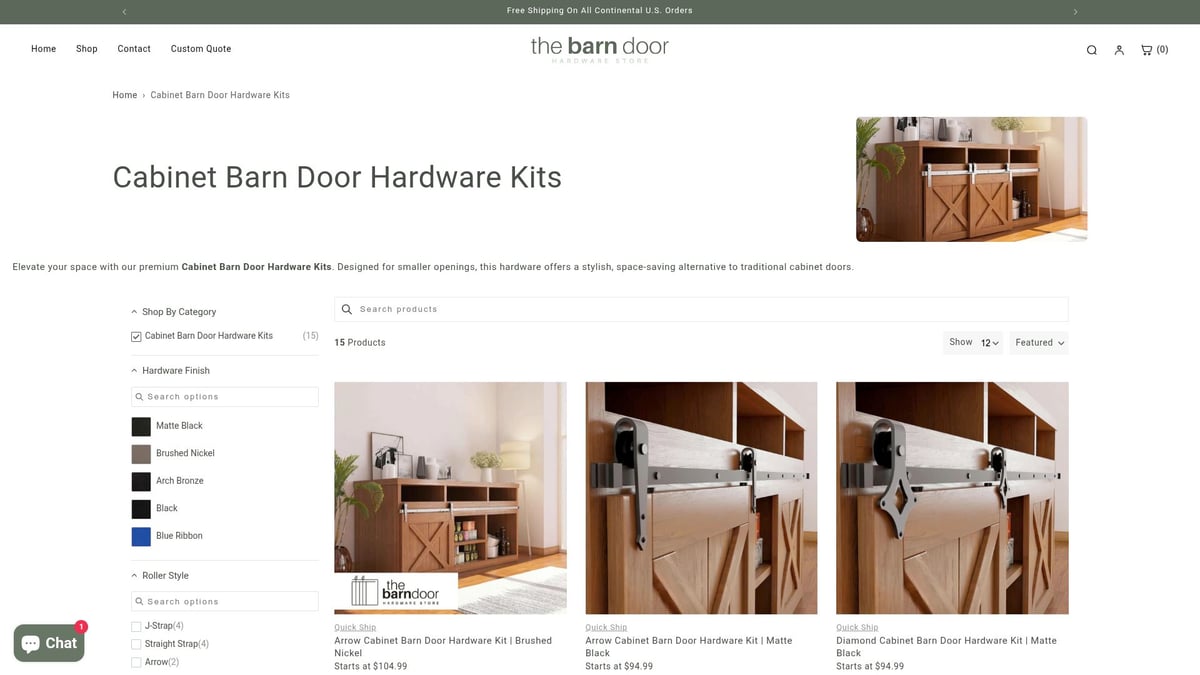
Benefits include free shipping, a lifetime warranty, and access to expert support. Whether you’re a DIYer or working with a pro, these kits simplify the process and offer peace of mind. Ready to transform your cupboards? Explore the cabinet mini hardware kits collection and discover how easy a high-quality upgrade can be.
Step-by-Step Guide: Installing Sliding Cupboard Door Hardware
Ready to take your storage to the next level? Installing sliding cupboard door hardware might seem intimidating, but with the right approach, you'll find it easier than you think. This step-by-step guide will walk you through the process, ensuring a smooth installation and a flawless finish. Whether you're updating a kitchen, bathroom, or closet, you'll discover how to achieve professional results and maximize your space.
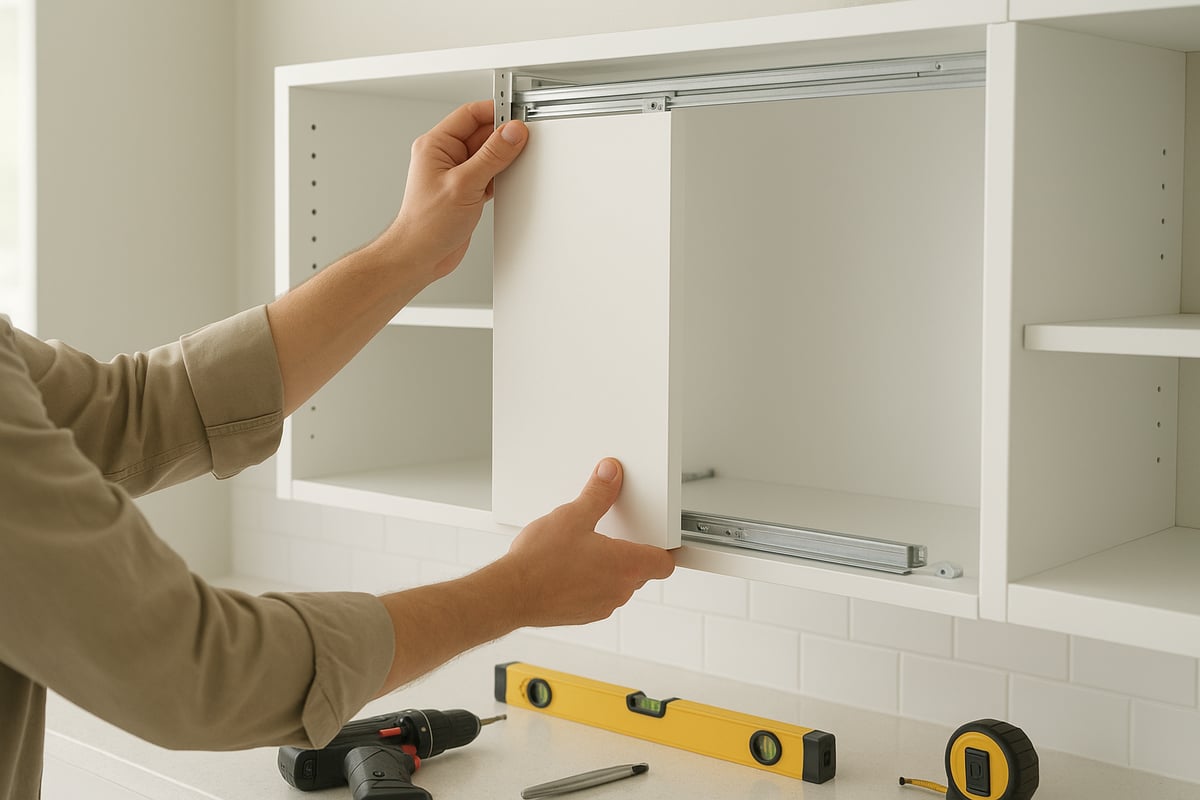
Preparation and Tools Needed
Before you dive in, gather all your supplies. For a typical sliding cupboard door hardware installation, you'll need a drill, level, measuring tape, screwdriver, and wall anchors. Make sure to have safety glasses and a pencil on hand for marking measurements.
Start by cleaning the cupboard area and doors thoroughly. Remove any old hardware, dust, or debris. Planning your layout now will prevent headaches later. Double-check that your doors and cabinet openings match the hardware specifications. If you're working with kids or pets around, keep your workspace organized and safe.
Step 1: Measuring and Marking
Accurate measurements are the secret to a smooth glide. Use your measuring tape to determine the exact placement for the tracks, referencing the manufacturer's instructions for your sliding cupboard door hardware. Mark the spots for your pilot holes with a pencil, ensuring they're level and evenly spaced.
Pro tip: Always measure twice before drilling. Even a small error can lead to misaligned doors or uneven movement. For best results, use a laser level for precision. If your cupboard doors are unusually thick or heavy, check that your hardware can handle the load before proceeding.
Before moving on, take a moment to review your markings and confirm everything lines up with your design vision. This attention to detail pays off later.
Step 2: Installing the Track and Guides
Now it's time to mount the track. Secure it to the cabinet or wall using the marked pilot holes, ensuring it's perfectly level. Depending on your system, you might be installing a top-mount or bottom-mount track. Each has its benefits, so follow your kit's instructions closely.
Don't forget about guides—these are key to keeping your sliding cupboard door hardware running smoothly. Floor guides and anti-jump devices prevent the doors from wobbling or derailing. If you're looking for reliable options, explore Sliding cupboard floor guides to find models designed for stability and ease of use.
Use quality screws and anchors appropriate for your cabinet's material. After installation, double-check the track's alignment to avoid future issues.
Step 3: Attaching Rollers and Hardware to Doors
With the tracks in place, focus on the doors. Attach the rollers to the top or bottom of each door, depending on your sliding cupboard door hardware system. Make sure the rollers are evenly spaced and securely fastened.
Adjust the roller height for proper clearance and smooth operation. If your hardware includes soft-close features, install these now by following the manufacturer's guidelines. This step ensures a gentle, quiet close every time.
Now's also the perfect moment to add handles or pulls. Choose ergonomic designs that complement your décor. For added flair, match them to your kitchen or bath fixtures for a cohesive look.
Step 4: Hanging and Testing Doors
Gently lift each door and position it onto the track. This can be a two-person job, especially with heavier doors. Once in place, slide the doors back and forth to check for smooth movement and proper alignment.
If you notice any sticking or uneven gaps, adjust the rollers or guides until the doors glide effortlessly. Test the soft-close mechanisms and ensure all parts of your sliding cupboard door hardware are functioning as intended.
This is the stage where patience pays off. Small tweaks now will save you from future frustrations and ensure your doors operate flawlessly for years.
Step 5: Final Adjustments and Safety Checks
With everything assembled, tighten all screws and double-check that every component is secure. Inspect the track, rollers, and guides for stability. Test the locking features if your hardware includes them, making sure they engage and release smoothly.
Give your sliding cupboard door hardware a final inspection. Make sure there are no sharp edges or loose parts, especially in homes with children or pets. Wipe down the doors and hardware to remove fingerprints and dust.
Congratulations, you've completed a professional-grade installation! For those looking to upgrade or streamline future projects, check out our cabinet mini hardware kits collection for easy-to-install, durable options that come with free shipping and a lifetime warranty. You're now equipped for stylish, functional storage in any room.
Maintenance and Troubleshooting Sliding Cupboard Door Hardware
Keeping your sliding cupboard door hardware in top shape is essential for smooth operation and lasting style. Regular care not only prevents common issues but also extends the life of your cupboards. Let’s break down the best ways to maintain, troubleshoot, and know when it’s time for an upgrade.
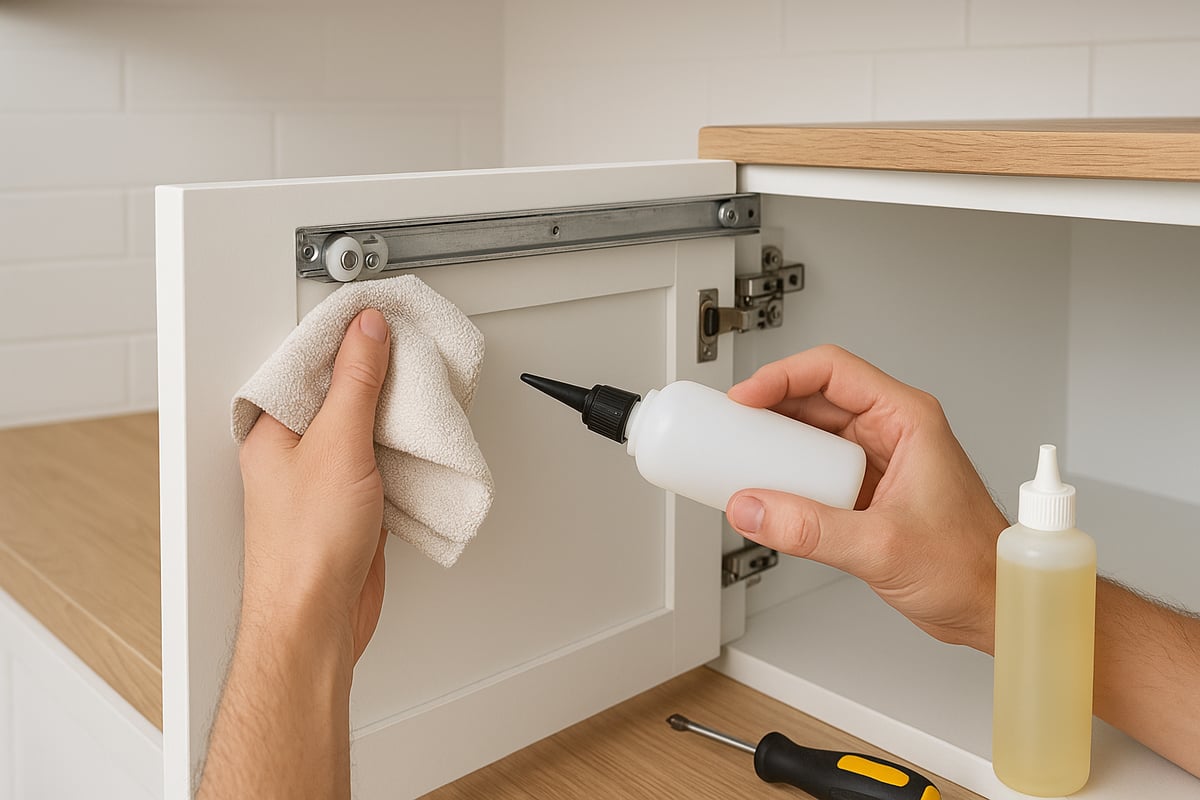
Routine Maintenance Tips
Regular maintenance is the secret to reliable sliding cupboard door hardware. Start by cleaning the tracks and rollers at least once a month. Dust, crumbs, and debris can clog the tracks, causing doors to stick or squeak. Use a soft brush or vacuum attachment to clear out loose particles, then wipe down the tracks with a damp cloth.
Lubrication is another key step. Apply a silicone-based lubricant to the tracks and rollers, avoiding oil-based products that can attract more dirt. This ensures the sliding cupboard door hardware glides smoothly with minimal effort. If your doors have soft-close mechanisms, check them occasionally to make sure they’re operating quietly and gently.
Don’t forget to inspect all visible screws, handles, and pulls for tightness. If you notice any wobbling or rattling, tighten the hardware right away. Replacing worn handles is easy with options from collections like Handles and pulls for cupboards. With just a few minutes of care each month, your sliding cupboard door hardware will continue to look and perform like new.
Common Issues and Solutions
Even with diligent care, sliding cupboard door hardware can develop issues over time. One of the most common problems is doors getting stuck or making noise. This often happens when tracks are dirty or misaligned. Cleaning and realigning the tracks usually solves the problem.
If your doors seem to rattle or jump off track, check the anti-jump disks and floor guides. These small components keep the doors stable. Replacing worn rollers or guides can eliminate wobbling and restore smooth movement. For a step-by-step approach to troubleshooting and fixing these issues, check out How to Install Sliding Cabinet Door Hardware, which covers both installation and quick fixes.
Sagging doors are another sign of trouble. This typically means the hardware is struggling to support the door’s weight. Adjusting the roller height or upgrading to a sturdier set of sliding cupboard door hardware can help. Always use components that match your door’s weight and thickness.
When to Replace Hardware
No matter how well you maintain them, all sliding cupboard door hardware eventually wears out. Watch for signs like persistent sticking, grinding noises, or visible rust and corrosion. If the doors no longer close properly, or if parts are bent or cracked, replacement is likely needed.
Upgrading your hardware can also be a smart move if you want a fresh look or improved functionality. Many homeowners choose new sliding cupboard door hardware to match updated décor or add features like soft-close or child-safe locks. On average, quality hardware should last 8 to 15 years with regular maintenance.
Ready for a seamless upgrade? Explore our cabinet mini hardware kits collection for durable, stylish, and easy-to-install options. Enjoy free shipping and a lifetime warranty, ensuring your cupboards stay beautiful and functional for years to come.
Design Trends and Innovations in Sliding Cupboard Door Hardware for 2025
Are you curious about how sliding cupboard door hardware is transforming kitchens and storage spaces in 2025? This year’s trends are all about blending style, convenience, and sustainability. Whether you’re renovating or just want a fresh look, staying ahead of the latest innovations can help you create a space that’s both functional and stunning.
Emerging Styles and Finishes
Minimalist designs are taking center stage in sliding cupboard door hardware for 2025. Clean lines, slim profiles, and subtle hardware blends seamlessly into modern kitchens and bathrooms. You’ll notice a surge in industrial-inspired pieces, too, with exposed metal tracks and brushed finishes adding bold flair.
Vintage looks are making a comeback, often paired with sleek, contemporary touches. Mixed materials—think wood paired with matte black steel or brass—are everywhere. This gives you the freedom to customize hardware to perfectly match your décor. Design flexibility is huge, so you can choose hidden or exposed hardware depending on whether you want a statement feature or a seamless appearance.
Smart Hardware and Technological Advances
Technology is changing the way we interact with sliding cupboard door hardware. Smart locking systems and touchless opening features are now available, letting you access storage spaces with just a wave or a tap on your phone. Some of the latest models even integrate with home automation platforms, making your kitchen smarter and more secure.
Imagine walking into your pantry with your hands full and having the doors glide open automatically. These advancements are especially popular in high-end kitchen remodels. If you’re interested in the technical side of installation, you can check out detailed Sliding Door Hardware Installation Instructions to see how some of these smart features are set up.
Sustainability and Eco-Friendly Options
Eco-conscious choices are front and center in the world of sliding cupboard door hardware. More brands are offering hardware made from recycled metals or sustainable wood, along with low-VOC finishes that keep indoor air clean. Homeowners are increasingly looking for products that combine durability with a smaller environmental footprint.
You’ll find that some manufacturers now highlight their green credentials, making it easier to shop sustainably. Whether you’re updating a kitchen or outfitting a new bathroom, choosing eco-friendly sliding cupboard door hardware means you can enjoy both style and peace of mind.
Data-Driven Insights
What are homeowners actually choosing this year? Data shows a strong preference for matte black, brushed nickel, and brass finishes in sliding cupboard door hardware. Minimalist and industrial styles are topping the charts, while demand for smart and eco-friendly features is rapidly growing.
Here’s a quick snapshot of 2025 trends:
| Trend | Popularity (%) |
|---|---|
| Matte Black Finish | 38 |
| Smart Hardware | 31 |
| Eco-Friendly Options | 27 |
With market growth on the rise, now is the perfect time to upgrade your cupboards. Ready for a seamless, stylish transformation? Explore our cabinet mini hardware kits collection for the latest in durable, easy-to-install sliding cupboard door hardware.
So now that you’ve got the inside scoop on choosing and installing the perfect sliding cupboard door hardware for your next project, are you feeling inspired to take the plunge? Trust me, finding the right fit can make all the difference—especially when it comes to combining style, function, and lasting durability. If you’re ready to explore top-notch options backed by expert support, free shipping, and a limited lifetime warranty, I’d encourage you to check out The Barn Door Hardware Store. You’ll find everything you need for a smooth, stress-free upgrade—happy renovating!
